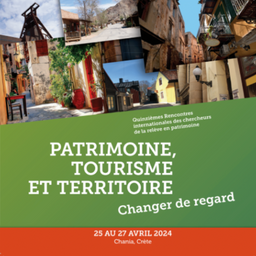Riopelle space at the Musée national des beaux-arts du Québec (MNBAQ): a significant heritage legacy or a strategic tourism hub?
My Session Status
Over the past few decades, many major Western art museums have evolved from institutions into “cultural market organizations,” adopting a managerial management style with strategic aims, developing business partnerships, and becoming players in the art, entertainment, and tourism markets. The idea was to mobilize more and more visitors and develop autonomy in a context of diminishing public funding. The so-called “communicational/commercial turn” of museums effectively marks a shift in museum activities, from collections to people. Institutions have gradually opened up to the outside world and activated a new function, that of serving the public. The modalities of interaction favoured by major art museums, where the exclusivity of the site and the abstraction of the works complicate cultural transmission, have then evolved. Communication, in all its forms (spectacular architecture, temporary exhibitions, cultural mediation, digital tools, marketing, etc.), has consequently become a fundamental dimension at the heart of these establishments. It enables both the commercialization of museum offerings and contact with a multitude of audiences and partners. A blur thus emerges: is getting closer to the public a way of becoming active within one’s community and taking social responsibility, or a way of making a profit from one’s offer and extending one’s reputation?
As one of Quebec’s most important art museums, the MNBAQ has considerable influence in the marketplace. It can contribute to the value of a work by acquiring it, or enhance artists’ reputation by offering them an exhibition. Its geographical location (Plains of Abraham) and diversified program of activities also make it a key player in the leisure and tourist industries.
Borrowing the modes of operation and associated modes of interaction, the museum resembles a “cultural market organization.”
As part of the celebrations marking Jean Paul Riopelle’s centenary, the MNBAQ will inaugurate a new space devoted entirely to the artist. The initiative, launched by a group of patrons, adopts an international vision, involves an architectural competition, and aims to introduce digital art projects as well as “innovative devices” enabling the personalization of the experience. It is worth noting that several elements of the initiative are in line with trends stemming from museums’ “communicational/commercial turn.”
This raises the question of whether Espace Riopelle serves to highlight and share a significant heritage legacy, or it acts as a strategic tourism hub. We might also question the compatibility of these two visions at the MNBAQ.
This paper therefore proposes to trace the market logic that has transformed several Western museum establishments since the mid-20th century, in order to better understand how a heritage legacy can today be integrated into a major art museum active in the markets. The analysis opens up a number of questions concerning the instrumentalization of heritage, mass cultural tourism, sociocultural inclusion, and commercialization.

Discussion